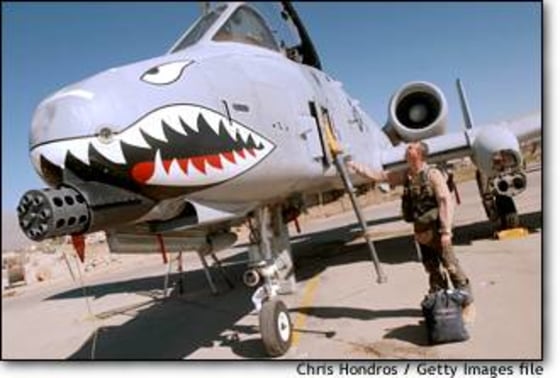According to Iraqi POWs, the black-colored A-10 Warthog was the single most recognizable and feared aircraft at low altitude during the Gulf war. The A-10, a twin-engine jet aircraft, noted for the 30 mm chain gun mounted on its chin, is a highly accurate weapons-delivery platform deployed in combat.
“So long as it can see an armored vehicle, it can destroy it,” said weapons expert William Martel of the Naval War College in Newport, R.I.
Officially called the Thunderbolt II, the first production A-10 flew in October 1975. Most recently it proved its worth during military operations at Bagram Air Base in Afghanistan, known for harsh and inhospitable conditions.
The twin-engine aircraft is specially designed for close air support of ground forces, can engage in combat over a large area and carry large cargo loads.
Its 30mm gatling gun can fire 3,900 rounds a minute and can defeat a variety of ground targets, including tanks. All of the A-10’s glass is bulletproof and titanium armor protects both the pilot and critical areas of the flight control system.
In the Gulf War, A-10s flew 8,100 sorties and were seldom grounded due to maintenance problems or poor flying conditions. A 1999 upgrade to the fleet provided the aircraft with a Global Positioning System.
The A-10 is designed to survive even the most disastrous damage and finish its mission by landing anywhere, even on improvised airstrips.
Its simple design and rugged air frame allow it to operate out of primative desert air strips.
